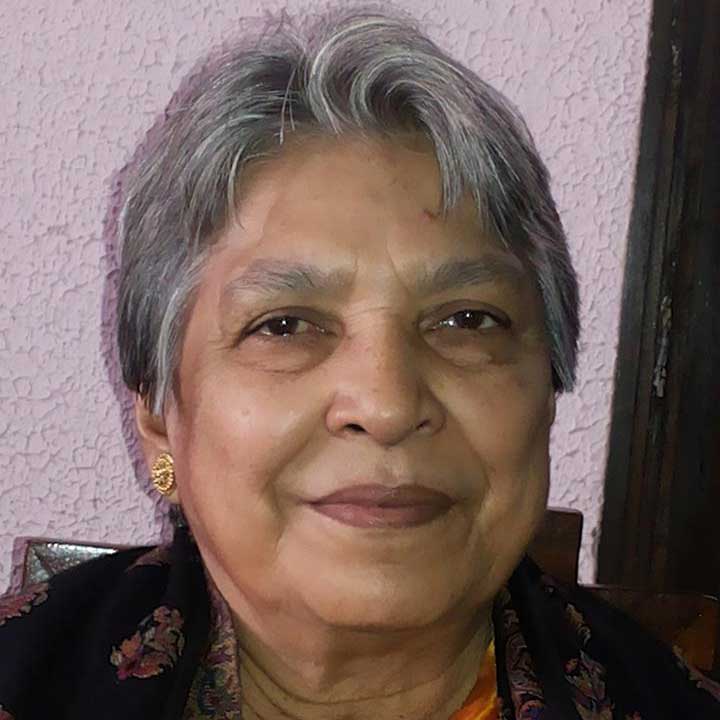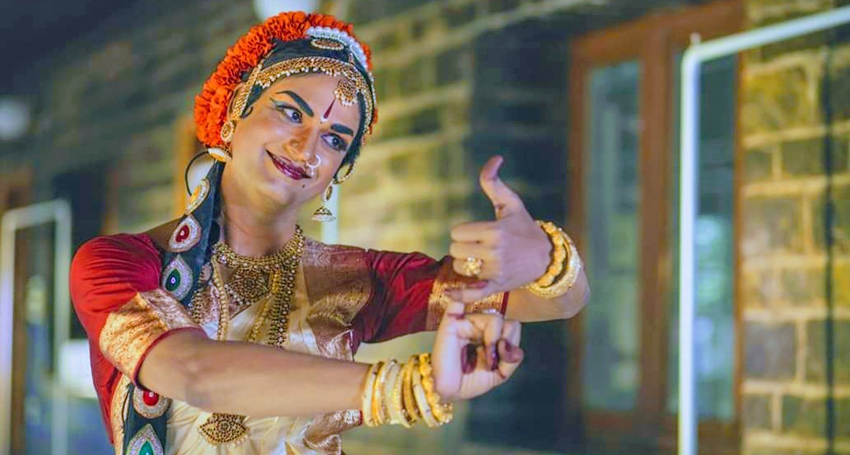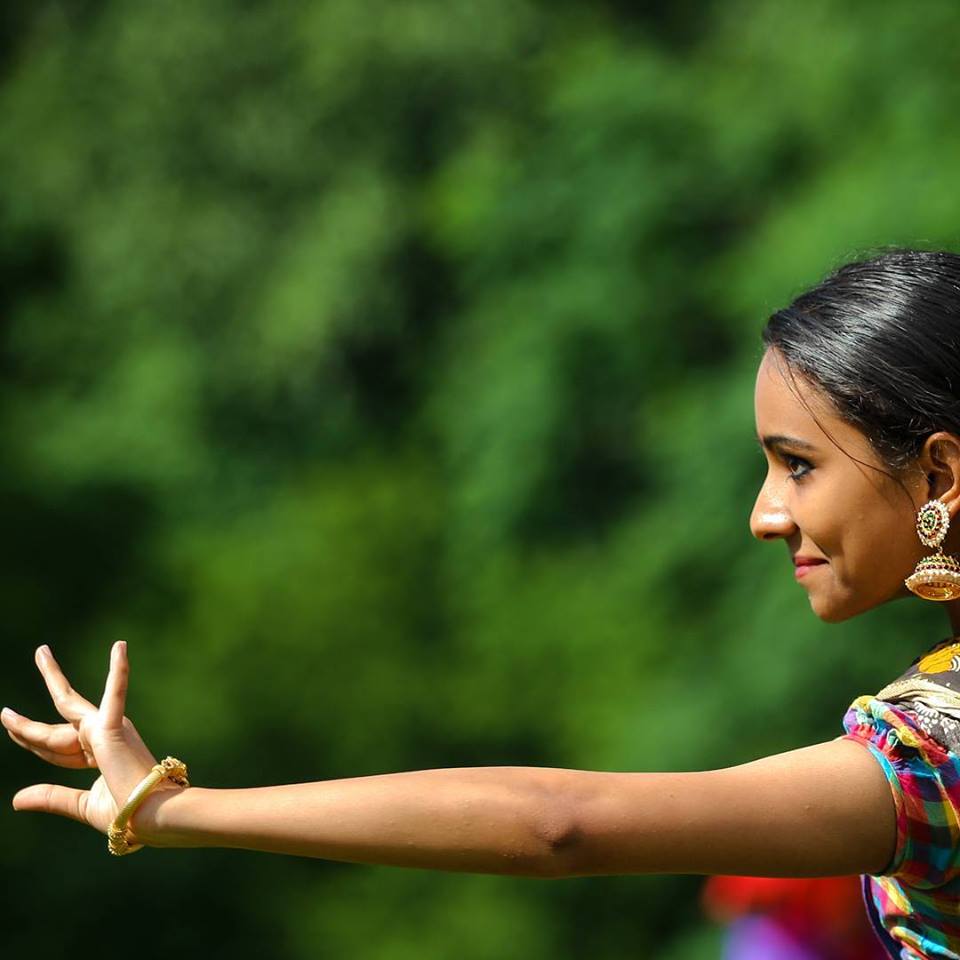Debnrytyam Studio’s Milita Utsav and Rasarangini invited some of the best and upcoming talents in the field of Indian Classical dance to share space among veterans, at Seva Sadan in Bangalore.
Mohiniattam performer Swapna Rajendrakumar’s Ananda Ganapathy led the way. Ganapathy has to, after all, be appeased first, so he may not obstruct proceedings to follow. Ananda Ganapathy was in Raagam Puraneer- a typical raagam used in Mohiniattam- and Adi Talam. The composition in Sopana Sangeetham was by the scholar poet Kavalam Narayana Panicker. The dancer sought the customary blessings of Ganesha. At once the dancer impersonated her Lord and in ekahari abhinaya took on the role of the devotee. Motifs that describe Ganapathy like his huge trunk, his ears, and his gait had much grace in its presentation. Swapna’s disciples praying to the deity with devotion helped to create a worshipful atmosphere.
It is interesting to note the popularity of Jaydeva’s Astapadis composed in 12th century A.D., in Kerala, Perhaps it was their bhakti element that attracted the art-loving people of the state to use them not only in the ritualistic practices of temples but also use them in their dances literature. Swapna Rajendrakumar’s expressional dance was “Sa virahe tava deena” from Jayadeva’s Astapadi. Interestingly in the is Astapadi both Krishna and Radha are sad while not in each other’s company. Radha’s sakhi explains to Krishna Radha’s pitiable condition. She seems to be dejected beyond belief. This was emoted with sensitivity.
Swapna’s nritta and abhinaya aspects had studied grace. Spectacular footwork flexibility, absence of heavy stamping, graceful semi-circular swinging movements, basic sitting postures with feet apart were a class apart. Her disciples, however, were in various stages of perfection.
The credit of choreographing the two pieces, both the pure dance piece and expressional dance piece must go to Kalamandalam Kshemavathy.
Kathak performer cum mentor Arpita Bannerjee, Bangalore began with an invocation to Krishna before going into its technicalities in Teen Taal.
A passionate dancer, she and her disciples kept up to the high level of energy and maintained the strong footwork, typical to Kathak, while at the same time they retained their poise, softness, precision and grace, finishing every bit on a particular beat, which is the first beat of the time cycle. The first beat is called the ‘Sam’ where the dancer poses and stops fleetingly, which is the point when the equally knowledgeable rasika can by her clap encourage the dancers. With a tarana in Jhaptal and Rag Bagesri, the group concluded their recital. Chakkars or spins and beautiful footwork were the hallmarks of the piece.
Nrityanjali Ensemble Pune under the guidance of Bharatanatyam exponent Lata Rajesh presented Kandar Anubhuti’, the immortal song of Arunagirinathar ending with the verse, ‘Guruvaai Varuvaai Arulvaai Guhane’. In the storyline, Arunagirinathar appeals to Lord Muruga to come to Him, not as a God to bestow blessings but as a master-teacher to guide him and enlighten him to the path of nobility, virtue and perfection. They presented thirupugazh from his enormous body of literary and musically rich work in Ragam Hamsanadam and a 7 ½ beat cycle interspersed with the Khanda Chapu Alarippu in 5 beats. Music composition with the support of the Mridangam and Konakkol by Shri Satish Krishnamurthy, Vocal by Karthik Hebbar, Flute by Raghavendra Baliga added to the perfection of their rendition.
The next presentation paid obeisance to the Astadikpalakas and the Panchamahabhutas through pure dance – nritta movements followed by a Varnam in praise of the Divine Mother, who is beauty, strength and compassion personified who bestows Supreme Bliss, detailing the Dasamamahavidyas of Devi. The dancers narrated the qualities and attributes of all the forms of Devi. Beginning with Ragam Jog and Adi talam, the dancers presented Varnam in Ragam Gambheera Nattai and Adi Talam, to a composition of Balamuralikrishna in the voice of Preethi Mahesh with the Mridangam and Konakkol support of M.S. Sukhi. The last piece was the much-adored composition of Swati Tirunal “Vishweshwar darshan kar chal man tum kashi”, in Ragam Sindhubhairavi and Rupaka Talam. Vocalist Srikanth Gopalakrishnan, Kanjira artist Satish Krishnamurthy, Violinist B Anantharaman supported the piece. Lata Rajesh is an excellent choreographer.
Mysore B. Nagraj of Articulate Dance Studio illumined the rasikas about the history of Kathak orienting the audience to have a brief peep into what is known as the Lucknow Gharana of Kathak. Kathak or the art of story-telling has had a long journey and has gone through many a metamorphosis. It found its place in the temple as a form of worship and then to the court of the Hindu king, practising spirituality. Subsequently, it found its pride of place in the Durbar of Muslim kings, expanding its technical virtuosity while at the same time retaining the Hindu art of story-telling. Mysore Nagraj took off from here and the led the audience to erstwhile Awadh and Kathak’s patron Nawab Wajid Ali Shah. The uniqueness of the Nawab’s love for Kathak made him dress up as Krishna-very often-with the women of his court dressing up as Gopis or Radha. He would dance for a spiritual experience. Lucknow Gharana is well known for its Thumris involving abhinaya and the other being the technical aspect.
[adrotate group=”9″]
Nagraj used two Thumris -of Bindain Maharaj, who lived in the court of Nawab Wajid Ali Shah- strung together to give a picture of three aspects of Nayika bhava-Vipralabdha, Khandita, and Abhisarika and all the gamut of the experience felt by a nayika as she waits for her lover. The Gopi’s wait for Krishna continued from morning till nightfall, when she had finally dozed off. She opened her eyes and it was morning. Voices of giggling and chatting made her peep out of her window. What she discovered was more than what she had expected. Krishna finally knocked at her door with tell-tale signs of how he had spent the night writ large on him.
“Aavata Shyam lachata chali mukuta dhari”, expressed lovingly of the beloved waiting for Krishna, while “Kaheko mere ghar aaye ho, unhike sang raho……Paiya na pado shyam” -why have you come to my house begging at my feet Shyam, stay with her- displayed the feelings of a khandita Nayika.
Mysore B. Nagraj’s solo rendition of a nayika lifted the rasikas from a mundane level to experience aesthetic bliss.
[adrotate group=”9″]
The abhinaya ang of Lucknow gharana Kathak was topped up with Tarana-the gharanas signature number, which the court of the Nawab witnessed. What was sung was translated into beautiful dance movements, at a slow pace befitting to the leisurely court of the Nawab. Tarana is a pure technical dance where the sequence of words resonates selected ninety-nine names of Allah, to a melody set to rhythm. This particular Tarana was in Rag Darbari, performed by Kartick, Yaswasini and Prarthona.
Beautiful costumes typical of Wajid Ali shah’s court with long flowing closely pleated gowns and churidar captured the period. Perfect rhythmic tatkar, alluring tehai, chakkars, good body control and salaam were remarkable.










